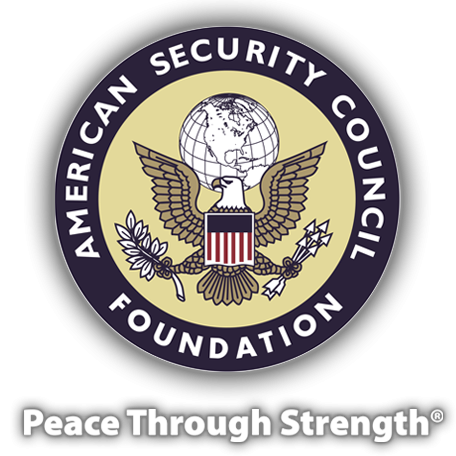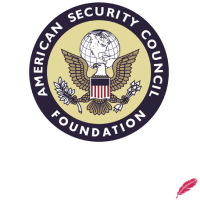Pakistan - Islam’s Atomic Bomb

A nuclear war over Kashmir between India and Pakistan could occur. Kashmir has been a flash point between the nuclear powers since the 1947 partition of India into Hindu India and Muslim Pakistan.
The Islamic Republic of Pakistan has an estimated 170 atomic bombs and India has 180 atomic bombs. Pakistan’s nuclear program was launched in 1972 as a deterrent against India. In 1998, Pakistan joined the world’s nuclear club with the testing of six nuclear devices. Nations with atomic bombs are the United States, the United Kingdom, France, Russia, China, North Korea, India, and Israel.
The most recent conflict occurred on April 22, 2025, in India-controlled Kashmir. A Pakistani-based terrorist group, Lashkar-e-Taiba (LeT), stopped a tourist bus, separated the men and women, and then separated the men by religion. The Muslim men lived, and 26 “infidel” Hindus were murdered in front of their families.
India responded to the atrocity with missile, drone, and airplane attacks on Islamic terror group infrastructure in Pakistan. Escalation followed with Pakistan responding. A US intervention led to a ceasefire, but the fundamental problem of Islamic supremacist belief that Muslims should not live under Hindu political control persists. Pakistan’s support and sponsorship of proxy terror groups compounds the problem.
On June 3, 1947, after 100 years of British colonial rule on the Indian subcontinent, British Viceroy Lord Louis Mountbatten announced the partition between India and West & East Pakistan. The partition border line had been hastily drawn in six weeks based on province and district religious majority numbers. East Pakistan became independent from West Pakistan after a bloody civil war in 1971 and was named Bangladesh.
Muslim League leader Mohammed Ali Jinnah was the primary driver for a separate country of Pakistan (in Urdu - Land of the Pure). Once the partition was implemented, one of the greatest mass migrations in human history resulted in roughly 15 million people crossing borders --- Hindus in Pakistan to India and Muslims in India to West and East Pakistan. Chaos, widespread massacres, arson, starvation, and sexual violence followed. The death toll was estimated to be more than 2 million people.
Kashmir, a land famed for its beauty, is located in northwest India, where the plains meet the Himalaya Mountains. Glacial waters from Chinese-occupied Tibet flow through Kashmir and are the source of water for millions of Pakistanis and Indians. At the onset of the recent hostilities, India shut off the flow to Pakistan. Since China controls the water source, it could shut off the water to India.
Kashmir has a Muslim majority population. At the time of partition, it was ruled by a Hindu maharaja, Hari Singh. He opted to join India after Muslims rose to join Pakistan and slaughtered Hindus. This led to war between India and Pakistan, which ended in a ceasefire and a divided Kashmir. The conflict continues to this day.
Pakistan was established as a safe harbor for Muslims in South Asia. At first, it welcomed all, including non-Muslims who constituted 23% of the population. But today, only 3% of the population is non-Muslim, as many Hindus have fled to India. Christians are persecuted and work on the fringes of society. Through the years, various government and religious leaders have implemented regulations to make Pakistan an Islamic state following Sharia law. Blasphemy laws are strictly enforced.
President Erdogan of Türkiye has increased military and economic ties with Pakistan. Pakistan launched over 300 Turkish Songar drones against India on May 8 in the recent conflict. The increased alliance is a manifestation of Erdogan’s “Asia Anew” initiative of deepening ties in Asia, with Türkiye being the spiritual and political leader of the global Muslim ummah (collective worldwide Muslim community). Türkiye is looking to Pakistan for nuclear technology.
Pakistan is also aligned with China despite the Chinese genocide against Muslim Uyghurs. China’s Belt and Road Initiative is building a massive seaport on Pakistan’s Indian Ocean coast with rail links to China. Chinese-made fighter jets and missiles are reported to have shot down several Indian fighter jets in the recent conflict.
India is increasing its military relations with Israel. Drones and other Israeli weapons were used in the recent attacks on Pakistan. Israel is maintaining a low profile for fear of jeopardizing political relations with Arab states.
Summary
The fundamental issue for peace in Kashmir and India is that Pakistan’s leaders do not think that Muslims should live under Hindu political control, and that Islam should dominate the world. For centuries, Muslim invaders from the north conquered vast swaths of Hindu India. Four hundred million Hindus are estimated to have been slain, and thousands of Hindu temples destroyed.
Present-day India, with a population of 1.4 billion, has approximately 200 million Muslim citizens. Pakistan has 241 million citizens and Bangladesh has 150 million citizens.
LeT, though officially banned in Pakistan, has broad support among Pakistan’s military and intelligence services. They are the same organizations that supported the Taliban in Afghanistan and gave refuge to Osama Bin Laden.
LeT has been implicated in many terrorist attacks in India, including Mumbai in 2008, when at least 174 people died, including six Americans and six people at a Jewish community center. LeT members claim to be jihadis with the goal of establishing a worldwide Islamic caliphate.
Action
1. Support India in its efforts to degrade Islamic terror organizations.
2. Designate Pakistan a state sponsor of terrorism.
3. The U.N. should call on Pakistan to ban Islamic terrorist groups.
Peace Through Strength!











